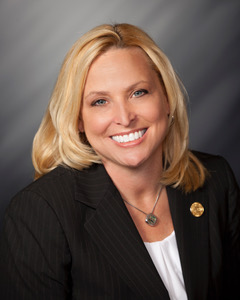IN-MaC Design and Innovation Training Studio Opens on UE campus; Facility to Advance STEM Education
FEBRUARY 23, 2025
UNIVERSITY OF UNVERSITY
NOAH ALLATZA
EVANSVILLE, IND. (02/23/2025) The University of Evansville (UE) celebrated the grand opening of an IN-MaC Design and Innovation Training Studio on Friday during a ribbon-cutting ceremony. Located within the Tapley Education Resource Center, this cutting-edge facility is one of only three in Indiana and was made possible through funding from Toyota USA Foundation’s Driving Possibilities initiative. The studio marks a significant step in expanding access to high-quality Science, Technology, Engineering, and Mathematics (STEM) education across the state and signifies UE’s ongoing commitment to educational innovation.
This new facility will serve as a central hub for STEM education professional development by supporting a growing network of Design and Innovation Studios in elementary and middle schools throughout Southwest Indiana through hands-on experience with cutting-edge technologies, including robotics, artificial intelligence, and advanced manufacturing.
There are currently 47 in-school studios, impacting more than 15,000 students and upskilling 150 teachers and future educators each year in the region, which encompasses Knox, Gibson, Vanderburgh, Dubois, and Perry counties.
Additionally, the training studio will be integrated into UE’s Department of Education programs, ensuring that future educators are well-versed in emerging technologies and can effectively prepare students for the evolving workforce. By equipping teachers with STEM-focused strategies, UE is playing a vital role in developing a new generation of highly skilled professionals.
“The University of Evansville is thrilled to open this center as another way to collaborate with industry leaders, higher education institutions, and K-12 educators to address the growing need for STEM education in Indiana,” said UE President Christopher Pietruszkiewicz. “This training studio will introduce students to in-demand careers and equip them with the skills they need to thrive in an Industry 4.0 economy. We are deeply grateful to Toyota USA Foundation for its support of this transformative initiative.”
In August, UE announced a new partnership with the Toyota USA Foundation, Toyota Indiana, North Gibson School Corporation, and the Evansville Vanderburgh School Corporation to serve as the Coordinating Partner of the Indiana Driving Possibilities initiative. The initiative includes a grant totaling approximately $2 million, with a portion allocated for the development of this new space.
“Toyota recognizes the importance of investing in STEM education across all levels,” said Tim Hollander, president of Toyota Indiana. “As an industry leader and employer, we appreciate UE’s efforts in addressing the demand for skilled professionals. As their partner in this work, we share the same vision of preparing students for the workforce of tomorrow.”
The technologies and curriculum for the studio are supported by key partners including Purdue University’s Indiana Next Generation Manufacturing Competitiveness Center (IN-MaC), STEM Education Works, and Toyota Indiana. (TMMI) and represent a $1 million investment in K-8, industry and post-secondary education.
Research shows that STEM-related careers are expected to grow at twice the rate of other occupations in the coming years. However, studies indicate that 92% of boys and 97% of girls lose interest in STEM subjects if they are not engaged before fifth grade. The UE Design and Innovation Training Studio aims to change this trajectory by equipping educators with the tools and resources needed to inspire young learners.
To learn more, please click here.
The University of Evansville is a private, comprehensive university with a solid foundation in the arts and sciences and professional schools in business, engineering, education, and health sciences. Established in 1854, UE is recognized across the globe for its rich tradition of innovative, academic excellence and dynamic campus community of #Changemakers.
Home of the Purple Aces, UE is located in the southwestern region of Indiana and offers over 75 majors, 17 Division I sports, and a unique study abroad experience at Harlaxton, the University’s very own Victorian manor located in the countryside of England. For more information, please visit evansville.edu.
MEDIA CONTACT
Noah Alatza, Chief Communications Officer
812-893-5319
![]()





 By Jim Redwine
By Jim Redwine
 “This bill encourages a collaborative effort to strengthen our juvenile legal system,” the bill’s sponsor, State Rep. Wendy McNamara (R-Evansville) said. “By bringing local and regional partners to the table, we can better allocate resources to best meet the needs of our youth.”
“This bill encourages a collaborative effort to strengthen our juvenile legal system,” the bill’s sponsor, State Rep. Wendy McNamara (R-Evansville) said. “By bringing local and regional partners to the table, we can better allocate resources to best meet the needs of our youth.”






